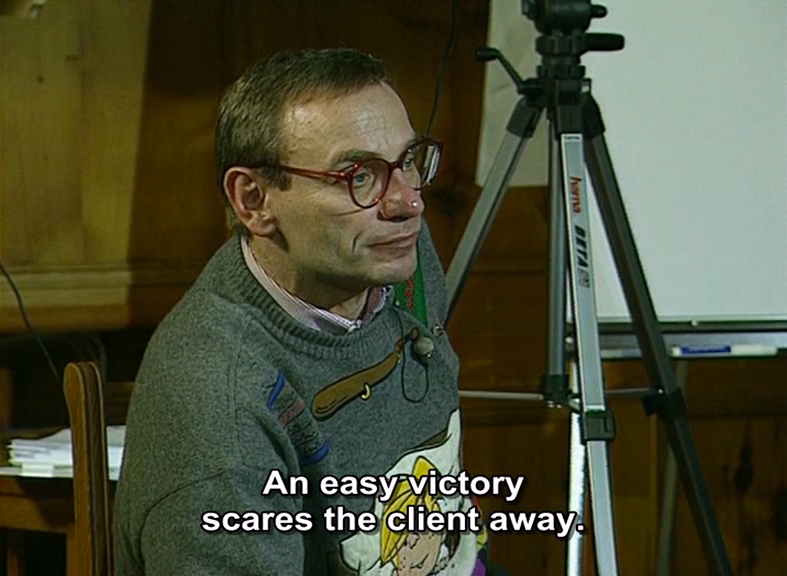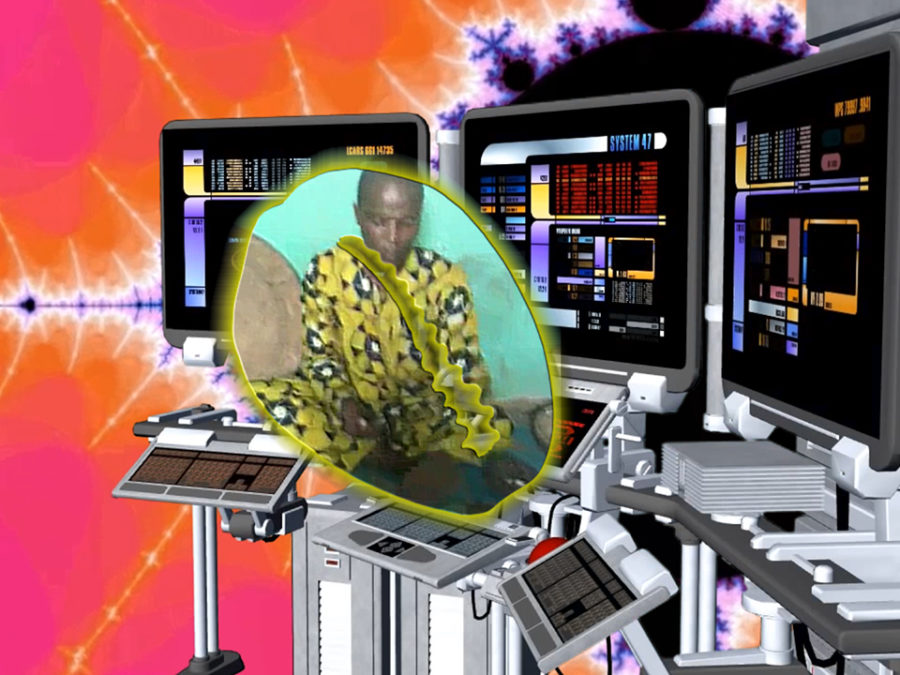Lynn Hershman Leeson has been exploring the impact and potential of nascent technologies in relation to gender, sexuality, and disembodiment for more than 50 years. Her video Seduction of a Cyborg from 1994 presents technology as an infectious disease women are seduced into: The protagonist, a blind woman, agrees to physical treatment that allows her to see images via computer-screen transmission. The new technology drags her into a different, hyper-mediated world that seriously affects her health after an initial period of intense pleasure: “Images of simulated worlds, sounds, masked passions gave enormous pleasure. The addiction came quickly. But each dose altered and decoded biological ecology […] Her immune system suffered. Still, she couldn’t stop. And soon there was no choice. Even her hearing became apparent. The manipulation was thorough and unprejudiced. She witnessed the pollution of history. Her body, a battlefield of depraved privacy, loneliness and terror, succumbed to the inevitable.”*
Historically, this piece is certainly located in the post-Cold War multipolar world order. The sounds and images stream from news reports and awaken associations of the tumultuous events before and after the threshold of 1989: the Tian’anmen massacre on June 3rd and 4th, 1989 in Beijing; the recent end to the right-wing dictatorships in Spain, Greece, and Portugal; the overturned military dictatorships in Argentina (1976-1983), Brazil (1964-1985), and Chile (1973-1988); the fall of the Berlin Wall; the first democratic elections in Eastern Europe in Poland (1989); the collapse of the Soviet Union (1991); the beginning of the Yugoslav Wars (1991-2001); the end of apartheid in South Africa (1991); as well as the famines in Somalia and Sudan in the early 1990s. While developing a growing addiction to her immersion in the stream of imagery and events of the 1990s, in her fractured selfhood, the artificially enhanced woman misses the ability to filter and distance herself from the images. They literally pollute her organism or ‘wetware.’ Manipulated computer chips finally destroy her immune system and transform her into a cyborg. The work is a poetic allegory about technology’s utopian potential: from futuristic medical testing procedures, ‘Eastern’ cybernetic research, to ‘Western’ artificial intelligence labs. In Seduction of a Cyborg, the female body of the 1990s finds itself in the process of becoming invisible: its physicality absorbed into a corpora of images. Nineteen years before Hito Steyerl’s video How Not to Be Seen: A Fucking Didactic Educational .MOV File (2013), Hershman Leeson’s female cyborg starts to merge into a world made of pictures.**
* Excerpt from the script: Lynn Hershmann Leeson, Seduction of a Cyborg, 1994.
** Hito Steyerl, How Not to Be Seen: A Fucking Didactic Educational .MOV File, 2013, video.
Text by Eva Birkenstock and Ulrike Gerhardt
Over the last four decades, artist and filmmaker Lynn Hershman Leeson has received international acclaim for her pioneering contributions to the fields of photography, video, film, performance, installation, and interactive and net-based media art. ZKM | Center for Art and Media Karlsruhe, Germany, mounted the first comprehensive retrospective of her work entitled Civic Radar in 2015, and in 2018, Hershman Leeson presented solo exhibitions at Kunst-Werke Institute for Contemporary Art, Berlin, and Haus der Elektronischen Künste, Basel. Her five feature films – Strange Culture, Teknolust, Conceiving Ada, !Women Art Revolution: A Secret History, and Tania Libre are all in worldwide distribution and have screened at the Sundance Film Festival, Toronto Film Festival, and The Berlin International Film Festival, among others.








